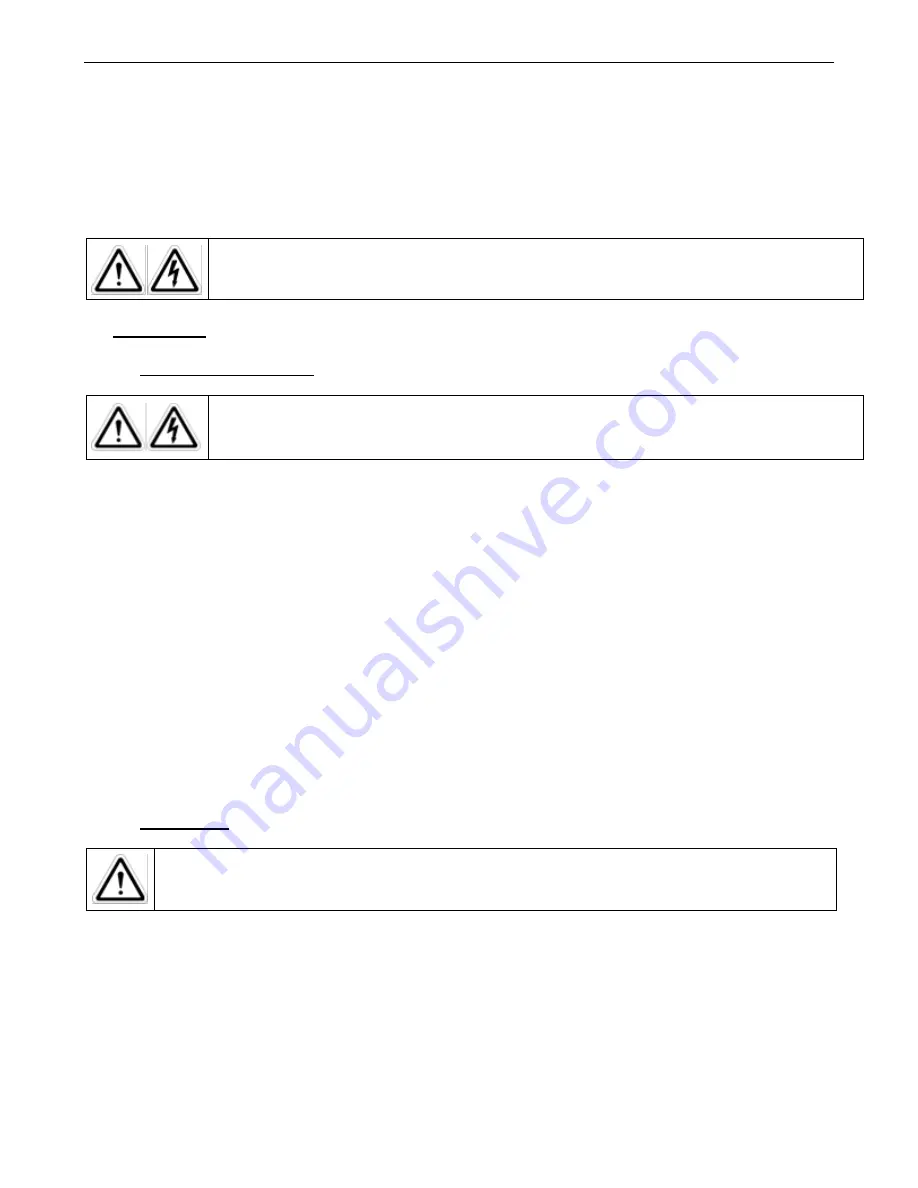
GEI 56128-L
© Copyright 2016 General Electric Company
8
2.
Dual voltage motors can be connected for the desired voltage using instructions on the nameplate or the
connection diagram.
3.
Wiring of motor, control, overload protection and grounding should meet the National and Local codes.
4.
When mounting conditions permit, the conduit box may be rotated so that the conduit entrance can be
made upward, downward, or from either side. For oversize conduit boxes, the mounting height of the
motor may have to be increased for accessibility.
WARNING
:
Motor and control overload protection and grounding should be in accordance with
the
USA -National Electric Code’ or ‘BS/EN 60204-1’ and/or ‘BS/EN 60204-11’ and consistent with
sound local practices
.
IV.
OPERATION
A.
Steps Prior to Starting
WARNING
:
If the motor has been in a damp location, dry it out thoroughly before operating.
Before energizing the motor for the first time or after an extended shut down, it is advisable to
check the insulation resistance, power supply and mechanical freedom of the motor.
In accordance with established standards, the recommended minimum insulation resistance for the stator winding
when measured with a 500 volt DC direct indicating ohmmeter with self-contained power supply (megger), shall not
be less than 5 mega-ohms at 40
C for a motor rated under 1000 volts, and not less than 100 mega-ohms at 40
C for
a motor rated over 1000 volts. If the insulation resistance is lower than this value, it is advisable to eliminate the
moisture in one of the following ways.
1.
Dry the winding in an air-circulating oven with the air surrounding the winding at 110
C, +5/-15
C until
the part has been above 90
C for at least four hours. Then the air temperature may be raised to 150
C,
+5
C/-15
C. Continue to heat until the insulation resistance is constant for a one-half-hour period.
2.
Enclose the motor with canvas or similar covering, leave a hole at the top for moisture to escape. Insert
heating units or lamps and leave them on until the insulation resistance is constant for a one-half hour
period.
3.
With the rotor locked mechanically and using approximately 10% of rated voltage, pass a current
through the stator windings. Increase the current gradually until the winding temperature reaches 90
C.
Do not exceed this temperature. Maintain a temperature of 90
C until the insulation resistance becomes
constant for a one-half hour period.
B.
Initial Start
WARNING:
Be sure the motor is not running and the power supply is disconnected.
1.
For sleeve-bearing motors, flush out all sleeve bearings with kerosene to remove any dust or grit which
may have accumulated during storage.
Make sure that the oil plugs are tight and fill the oil wells with the oil recommended in the “Maintenance”
section under “Sleeve Bearings” of this book to center of the oil level sight gauges. The oil level should be
checked only when the machine is not running.
Do not flush out anti-friction bearings. The bearing grease supplied is sufficient for initial operation.
2.
Whenever possible, examine the interior of the motor for loose objects or debris which may have
accumulated and remove any foreign material.
















































